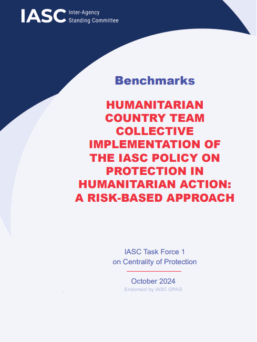On January 26th, 2015, the Results-Based Protection Program held a webinar and launched a discussion forum on Communicating with Communities: Analyzing the role of information and the flow of communication with affected populations to address protection outcomes. The discussion underscored several key areas and cross-cutting issues of communication flows and information:
- Communicating with Communities within a Problem-Solving Approach to engaging in a meaningful and genuine two-way dialogue with communities and affected populations
- Access to specific, accurate information from a trusted source can impact or decrease exposure to protection risks
- Information flow within a community and between a community and other stakeholders, including humanitarian actors, peacekeeping missions, government authorities, parties to conflict
- Perspectives of the affected population of a protection issue helps to inform programming
- Being Informed is a Result that Supports Protective Outcomes. Information that enhances a communities’/affected population’s capacity to act and reduce their own exposure to risks.
- Additional Key Points support effective communications with affected populations:
- Coordination that ensures information flows across sectors
- Senior Leadership Support, Institutional Structures, Processes, Dedicated Resources, and Capacity to prioritize and facilitate genuine two-way communication flows with affected populations
- Professional Standards for Protection required to ensure confidentiality and informed consent are upheld while engaging with affected populations.


